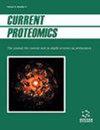蛋白质组学技术及其在肉类质量、安全和真实性保障中的应用
IF 0.5
4区 生物学
Q4 BIOCHEMICAL RESEARCH METHODS
引用次数: 4
摘要
蛋白质组学工具被广泛用于了解肌肉蛋白质组学与肌肉转化为肉、死后蛋白质水解、肉质地和肉颜色变化之间的关系。蛋白质组学工具的发展也导致了它们在解决安全性和真实性问题方面的应用,包括肉类物种鉴定、动物副产品检测、肉类产品中的非肉类成分和组织、可追溯性、转基因成分鉴定、化学残留物和其他有害物质。蛋白质组学工具也被用于一些潜在的领域,比如了解动物运输的影响、眩晕、屠宰压力、清真认证和与动物福利相关的问题。蛋白质组学和肽组学技术及其在肉类微生物学、安全性和认证方面的应用正在取得重大进展,作为目前使用的基于DNA的方法的有趣和互补的替代方案。肉类科学的未来研究需要与新兴的代谢组学、脂质组学和其他组学技术联系起来,以确保综合肉类质量和安全管理。本文对蛋白质组学在肉类价值链质量安全评价中的应用及其潜在应用前景进行了综述。本文章由计算机程序翻译,如有差异,请以英文原文为准。
Proteomic Technologies and their Application for Ensuring Meat Quality, Safety and Authenticity
Proteomic tools were extensively used to understand the relationship between muscle proteome and conversion of
muscle to meat, post-mortem proteolysis, meat texture, and variation in meat color. Developments in proteomic tools have
also resulted in their application for addressing the safety and authenticity issues including meat species identification,
detection of animal by-products, non-meat ingredients and tissues in meat products, traceability, identification of genetically
modified ingredients, chemical residues and other harmful substances. Proteomic tools are also being used in some of the
potential areas like understanding the effect of animal transportation, stunning, slaughter stress, halal authentication and
issues related to animal welfare. Emerging advances in proteomic and peptidomic technologies and their application in
traceability, meat microbiology, safety and authentication is taking a major stride as an interesting and complementary
alternative to DNA based methods currently in use. Future research in meat science need to be linked to emerging
metabolomic, lipidomic and other omic technologies for ensuring integrated meat quality and safety management. In this
paper, a comprehensive overview of the use of proteomics for the assessment of quality and safety in meat value chain and
their potential application is discussed.
求助全文
通过发布文献求助,成功后即可免费获取论文全文。
去求助
来源期刊

Current Proteomics
BIOCHEMICAL RESEARCH METHODS-BIOCHEMISTRY & MOLECULAR BIOLOGY
CiteScore
1.60
自引率
0.00%
发文量
25
审稿时长
>0 weeks
期刊介绍:
Research in the emerging field of proteomics is growing at an extremely rapid rate. The principal aim of Current Proteomics is to publish well-timed in-depth/mini review articles in this fast-expanding area on topics relevant and significant to the development of proteomics. Current Proteomics is an essential journal for everyone involved in proteomics and related fields in both academia and industry.
Current Proteomics publishes in-depth/mini review articles in all aspects of the fast-expanding field of proteomics. All areas of proteomics are covered together with the methodology, software, databases, technological advances and applications of proteomics, including functional proteomics. Diverse technologies covered include but are not limited to:
Protein separation and characterization techniques
2-D gel electrophoresis and image analysis
Techniques for protein expression profiling including mass spectrometry-based methods and algorithms for correlative database searching
Determination of co-translational and post- translational modification of proteins
Protein/peptide microarrays
Biomolecular interaction analysis
Analysis of protein complexes
Yeast two-hybrid projects
Protein-protein interaction (protein interactome) pathways and cell signaling networks
Systems biology
Proteome informatics (bioinformatics)
Knowledge integration and management tools
High-throughput protein structural studies (using mass spectrometry, nuclear magnetic resonance and X-ray crystallography)
High-throughput computational methods for protein 3-D structure as well as function determination
Robotics, nanotechnology, and microfluidics.
 求助内容:
求助内容: 应助结果提醒方式:
应助结果提醒方式:


